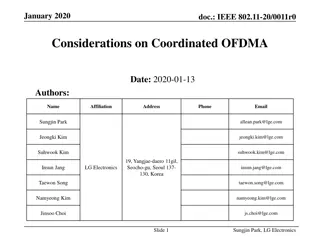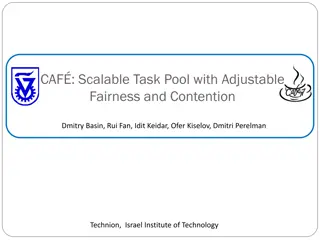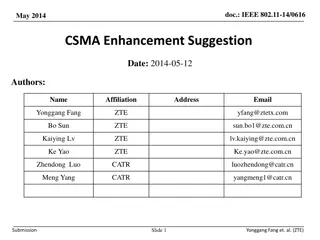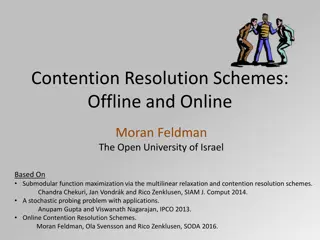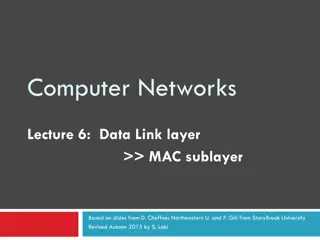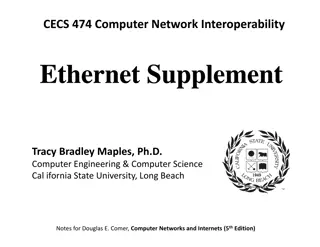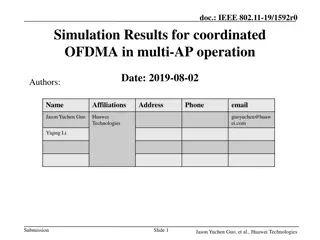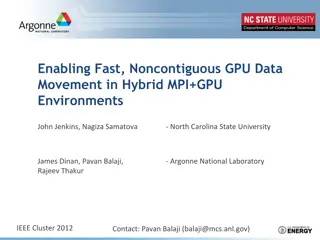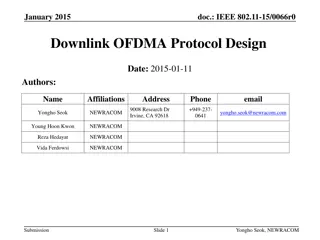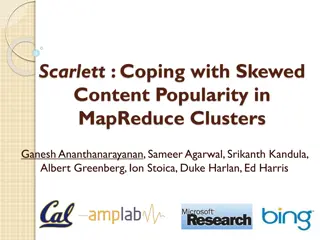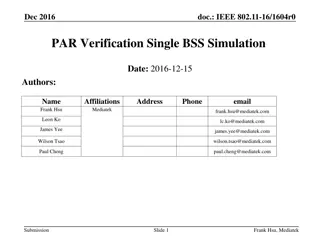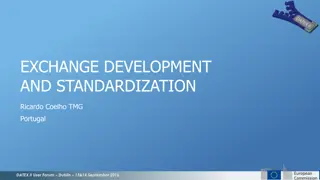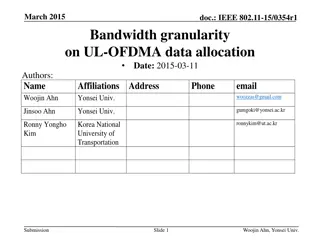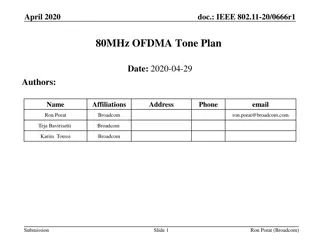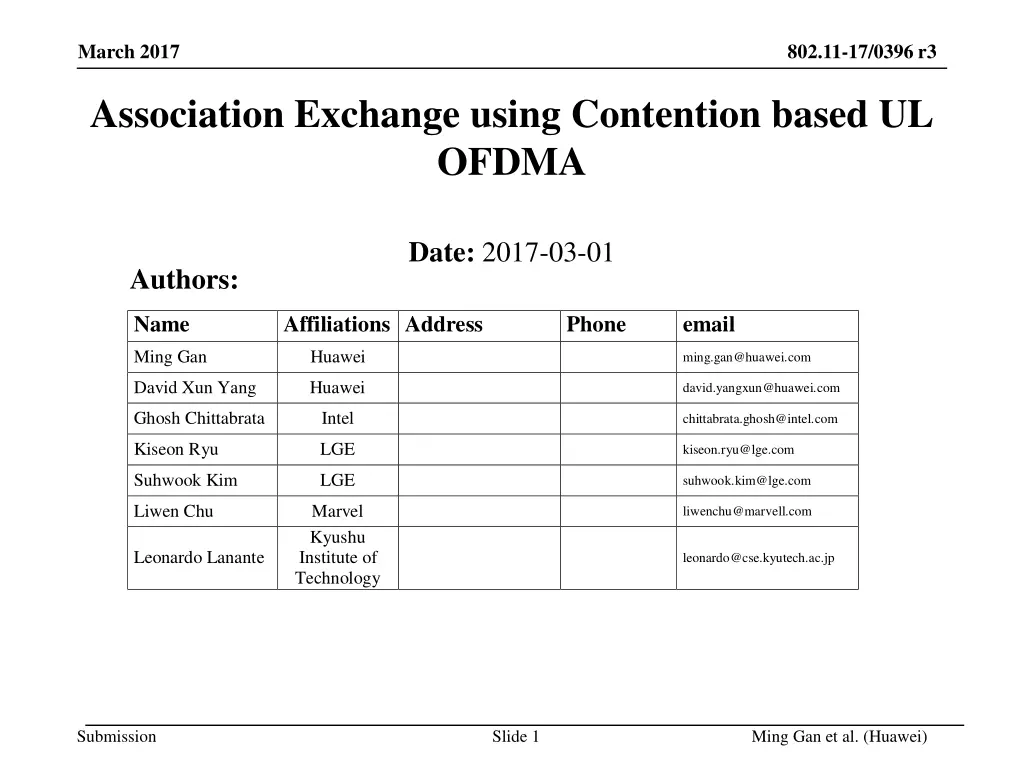
UL OFDMA Association Exchange Using Contention-Based Approach
"Learn about the innovative UL OFDMA random access technique for unassociated STAs in 802.11 networks. Explore how APs respond to multiple association requests without assigned AIDs. Addressing acknowledgment challenges and proposing solutions for efficient network access."
Download Presentation

Please find below an Image/Link to download the presentation.
The content on the website is provided AS IS for your information and personal use only. It may not be sold, licensed, or shared on other websites without obtaining consent from the author. If you encounter any issues during the download, it is possible that the publisher has removed the file from their server.
You are allowed to download the files provided on this website for personal or commercial use, subject to the condition that they are used lawfully. All files are the property of their respective owners.
The content on the website is provided AS IS for your information and personal use only. It may not be sold, licensed, or shared on other websites without obtaining consent from the author.
E N D
Presentation Transcript
March 2017 802.11-17/0396 r3 Association Exchange using Contention based UL OFDMA Date: 2017-03-01 Authors: Name Affiliations Address Phone email Ming Gan Huawei ming.gan@huawei.com David Xun Yang Huawei david.yangxun@huawei.com Ghosh Chittabrata Intel chittabrata.ghosh@intel.com Kiseon Ryu LGE kiseon.ryu@lge.com Suhwook Kim LGE suhwook.kim@lge.com Liwen Chu Marvel Kyushu Institute of Technology liwenchu@marvell.com Leonardo Lanante leonardo@cse.kyutech.ac.jp Submission Slide 1 Ming Gan et al. (Huawei)
March 2017 802.11-17/0396 r3 Introduction In [1], random access behavior for unassociated STAs is not defined. Contention based UL OFDMA can be used for the association procedure MU transmission can allow multiple unassociated STAs to accomplish the association procedure simultaneously UL OFDMA random access can also help unassociated STA at the edge of BSS to access the network quickly due to narrow band transmission Trigger frame for random access Contention-based UL OFDMA DL M-BA DL OFDMA UL Ack Response frame (Pre-AID ) Ack ACK/BA to STA1 Association response to STA1 Probe Request from STA1 Probe Request from STA2 Submission Slide 2 Ming Gan et al. (Huawei)
March 2017 802.11-17/0396 r3 Question How does AP response with the acknowledgements to multiple unassociated STAs which sent the association request successfully through UL OFDMA random access? Both M-BA frame and OFDMA Ack/BA frame require AID of the receivers However, unassociated STAs do not have AID assigned by AP. In this contribution, we provide an acknowledgement mechanism throughput M-BA frame and Pre-AID assignment mechanism Submission Slide 3 Ming Gan et al. (Huawei)
March 2017 802.11-17/0396 r3 Comments on pre-AID CID Clause Page No. Comment Proposed Change Resolution 5036 27.5.2.6.2 173.61 It is mentioned that the acknowledgement procedure for random access is as defined in 10.3.2.10.3; however, for an unassociated STA, due to its absence of an AID, may not be acknowledged as similar to an associated STA; Suggest to define an MU acknowledgement procedure for unassociated STAs using UL OFDMA-based random access, following a definition of an AID for the TBD in Subclause 27.5.2.3. 7254 27.5.2.6.2 173.64 Acknowledgment procedure in response to the OFDMA random access request from unassociated STAs needs to be specified. It is not clear how STA without AID could participate the UL MU ack procedure in 10.3.2.10.3. As in the comment 7546 27.5.2.6.2 173.62 describe specifically how STA without AID acquires its ack following the procedure in 10.3.2.10.3, when there are multiple acks to multiple STA without AID 8140 27.5.2.2.1 164.47 Random Access UL OFDMA for unassociated STAs is mentioned here, but how does such a STA recognize the DL OFDMA response? Such a STA needs some sort of AID value to identify its DL RU allocation - the text refers me to 27.5.2.6 but there is nothing here mentioning what to do for unassociated STA, while over in 27.5.2.3, there is a TBD in a sentence that refers to unassociated STA The UL OFDMA-based random access procedure for unassociated STAs is not defined Define the rules for unassociated STA operation within UL OFDMA Random Access 8520 27.5.2.6.2 173.01 Define 8157 9.3.1.9.7 38.04 Now Multi-STA BlockAck can not be used to acknowledge the association request frame because of unassociated STA is not assigned an AID Currently, it is considered that both the associated STAs and unassociated STAs are allowed to join the UL OFDMA-based random access. However, the real state that the STA is in and the state that the AP thinks the STA is in according to the define a common special AID for all the unassociated STAs such that they can parse the M- BA frame correctly 9332 172.25 27.5.2.6 9119 9120 Submission Slide 4 Ming Gan et al. (Huawei)
March 2017 802.11-17/0396 r3 M-BA frame The agreed M-BA structure is B0-B10= AID B11=ACK/BA A value of 15 in the TID subfield in the Per STA Info field of the M-BA frame indicate the successful acknowledgement of a management frame that requires an immediate response and is carried in the soliciting A-MPDU. [MAC Motion 79, March 2016, see [2]] Under the condition of the unassociated STA without AID, how does AP send the acknowledgement to its association request? According to the agreed motion, the TID value shall be set to 1111 Submission Slide 5 Ming Gan et al. (Huawei)
March 2017 802.11-17/0396 r3 Acknowledgement to association exchange Set AID subfield to an unique AID value, e.g., 2045, in the M-BA frame Provide an unique identifier for any unassociated STAs that has used an RU for random access RA field is added after the Per TID info field MAC address field is used to distinguish which STA s request management frame is successfully delivered through OFDMA random access Both Ack type and SSC field are set to 0, keeping consistent with the parsing scheme of the implemented ax device Indicate that the total length of subfields following Per TID STA info subfields is 10 bytes SSC (2 bytes ) Reserved (2 bytes ) RA (6 bytes) B0-B10= 2045 B11= BA TID= 1111 Submission Slide 6 Ming Gan et al. (Huawei)
March 2017 802.11-17/0396 r3 Per STA Info Subfield Parsing with Proposed M- BA An associated STA that had transmitted either on a scheduled RU or an RU for random access will determine the length of the Per STA Info subfield based on the ACK Type subfield AID 2045 indicates that the Per STA Info subfield is for an unassociated STA ACK Type subfield and SSC fields are set to 0 for AID 2045, indicating the presence of the Per STA Info subfield only for an unassociated STA, and has 10 bytes An unassociated STA that had transmitted on a random access RU will ONLY parse the remaining 10 octets following the Per TID Info subfield when B0-B10 is an AID 2045 The STA parses Per STA Info subfield to decode the RA field If the RA field matches the MAC address of the unassociated STA, it interprets that the HE Trigger-based PPDU transmitted on an RU assigned for random access was received by the AP successfully. Submission Slide 7 Ming Gan et al. (Huawei)
March 2017 802.11-17/0396 r3 Pre-AID assignment HE AP can assign the Pre-AID to the un-associated HE STA through the management response frame for association or other purpose Define New element for Pre-AID, which is carried in the management response frame This element can be transmitted in response management frame for association, e.g., Probe Response frame, excluding Association Response frame The management frame which carries Pre-AID shall be transmitted in SU format Propose pre-AID lifetime timer to manage Pre-AID An unassociated STA with assigned pre-AID might not complete association with the AP that has assigned the pre-AID Example scenario: STA interested in retrieving location information from an AP In order to release the Pre-AID assigned to this STA, we need to define a pre-AID lifetime timer The assigned Pre-AID is automatically released once the association procedure (or other procedure) is completed or Pre-AID life time timer expires The Pre-AID value may be assigned to another unassociated STA after it is released The Pre-AID value shall not be used between the associated STA and the AP in any UL or DL frame exchange Slide 8 Submission Ming Gan et al. (Huawei)
March 2017 802.11-17/0396 r3 Pre-AID Assignment Element in Request and Response Frame We propose to include the assigned pre-AID of an unassociated STA in the Pre-AID Assignment element The STA may include the Pre-AID Assignment element in the Request management frame (example, Probe Request) If the Pre-AID Assignment element is present in the Request frame, then the AP includes the element in the solicited Response frame (for example, Probe Response frame) Element ID Length Element ID Extension Pre-AID Request /Response Pre-AID Reserve d Pre-AID Lifetime Timer Bits 8 8 8 1 11 4 16 Propose to include the following subfields in the Pre-AID Assignment element Pre-AID Request/Response: This subfield indicates whether the element Request or Response frame; If the value is set to 0, Pre-AID and Pre-AID Lifetime Timer fields are reserved Pre-AID: A random value assigned by the AP to the unassociated STA identified by the MAC address in Request management frame This value is selected from a set of AIDs which are not assigned to associated STAs Pre-AID Lifetime Timer: This subfield indicates a timer after which the pre-AID assigned to a unassociated STA will expire The unit of the timer is expressed in 1 TU Submission Slide 9 Ming Gan et al. (Huawei)
March 2017 802.11-17/0396 r3 Benefits Association Exchange using Contention based UL OFDMA It allows multiple unassociated STAs to access the network simultaneously E.g. considering the 80 MHz BW with 37 26-tone RU and the 37% OFDMA Random access efficiency, more than 13 times the number of unassociated STAs are allowed to access the network simultaneously It also solves unbalanced link budget problem between AP and STA Pre-AID assignment Within the pre-AID lifetime, the AP uses the assigned pre-AID to schedule the unassociated STA to transmit the HE trigger-based PPDU by the Trigger frame Or transmits frame in HE MU PPDU to the unassociated STA before association. E.g. FTM frame, authentication response, association response Submission Slide 10 Ming Gan et al. (Huawei)
March 2017 802.11-17/0396 r3 Summary We propose an acknowledgement mechanism throughput M-BA frame to the unassociated STAs An unique AID in the M-BA frame is proposed to be as a common identifer of all the unassociated STAs MAC address field in the M-BA frame is proposed to distinguish the unassociated STA which successfully transmits frame through UL OFDMA random access Pre-AID assignment in the response management frame allows unassociated STAs to join OFDMA MU transmission Submission Slide 11 Ming Gan et al. (Huawei)
March 2017 802.11-17/0396 r3 SP 1 Do you agree to provide a resolution to CID 5036, 7254, 7546, 8140, 8520 8157, 9332 9119 9120 based on the concept proposed in this contribution? Acknowledgement through M-BA Submission Slide 12 Ming Gan et al. (Huawei)
March 2017 802.11-17/0396 r3 SP2 Do you agree to provide a resolution to CID 5036, 7254, 7546, 8140, 8520 8157, 9332 9119 9120based on the concept proposed in this contribution? only for Acknowledgement through M-BA, excluding Pre-AID assigment Submission Slide 13 Ming Gan et al. (Huawei)
March 2017 802.11-17/0396 r3 SP3 Do you agree to have Pre-AID assignment in 11ax? Submission Slide 14 Ming Gan et al. (Huawei)
March 2017 802.11-17/0396 r3 References [1] 802.11 ax D1.0 [2] 11-15-0132-17-00ax-spec-framework.docx Submission Slide 15 Ming Gan et al. (Huawei)

